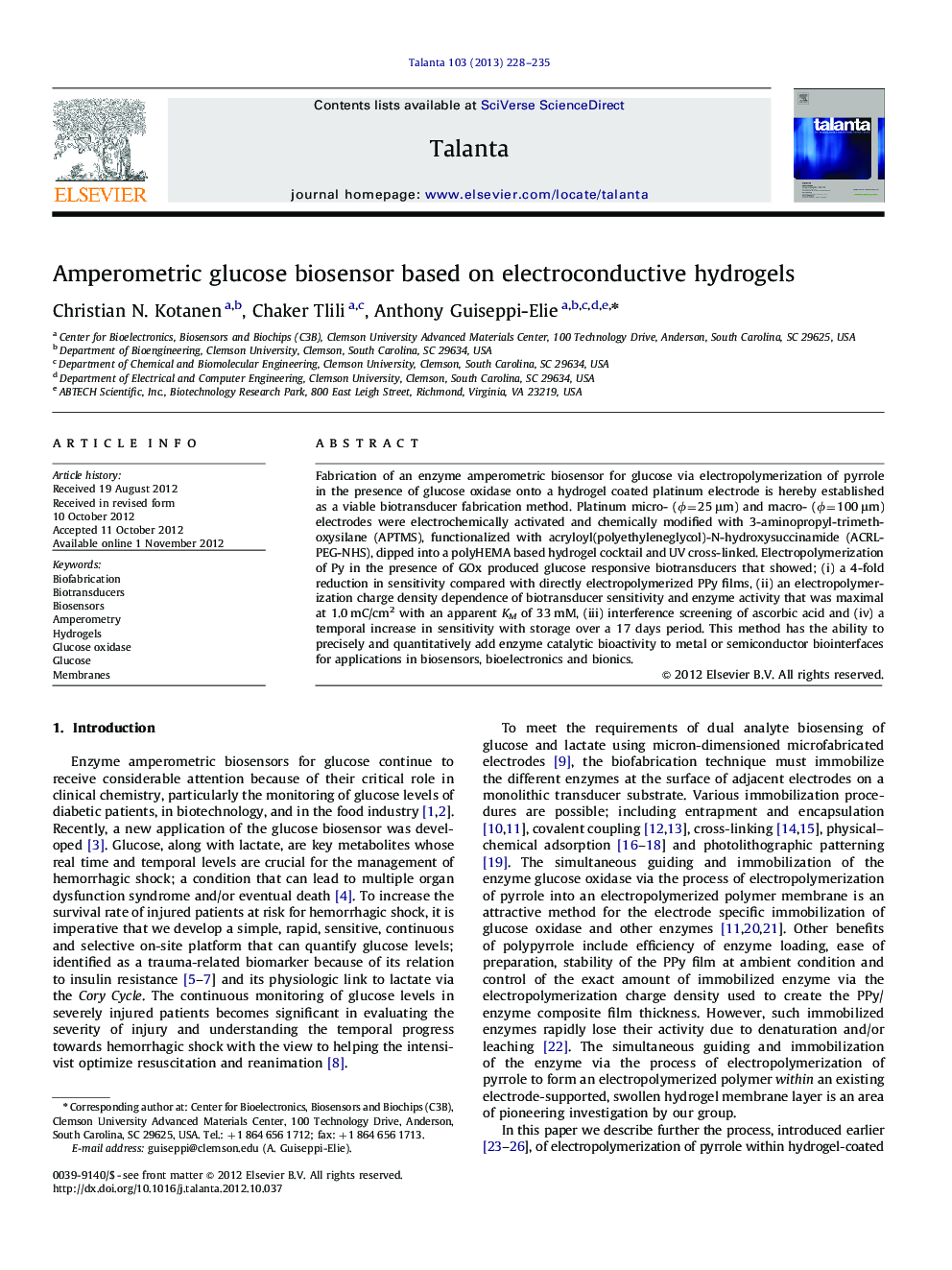| Article ID | Journal | Published Year | Pages | File Type |
|---|---|---|---|---|
| 1242924 | Talanta | 2013 | 8 Pages |
Fabrication of an enzyme amperometric biosensor for glucose via electropolymerization of pyrrole in the presence of glucose oxidase onto a hydrogel coated platinum electrode is hereby established as a viable biotransducer fabrication method. Platinum micro- (ϕ=25 μm) and macro- (ϕ=100 μm) electrodes were electrochemically activated and chemically modified with 3-aminopropyl-trimethoxysilane (APTMS), functionalized with acryloyl(polyethyleneglycol)-N-hydroxysuccinamide (ACRL-PEG-NHS), dipped into a polyHEMA based hydrogel cocktail and UV cross-linked. Electropolymerization of Py in the presence of GOx produced glucose responsive biotransducers that showed; (i) a 4-fold reduction in sensitivity compared with directly electropolymerized PPy films, (ii) an electropolymerization charge density dependence of biotransducer sensitivity and enzyme activity that was maximal at 1.0 mC/cm2 with an apparent KM of 33 mM, (iii) interference screening of ascorbic acid and (iv) a temporal increase in sensitivity with storage over a 17 days period. This method has the ability to precisely and quantitatively add enzyme catalytic bioactivity to metal or semiconductor biointerfaces for applications in biosensors, bioelectronics and bionics.
► Hydrogel-coated platinum microelectrodes produce glucose responsive biotransducers. ► Electropolymerization of pyrrole with glucose oxidase confers specificity. ► Bioanalytical performance is attenuated by the hydrogel. ► Sensitivity is improved upon standard storage over a 17 days period.
